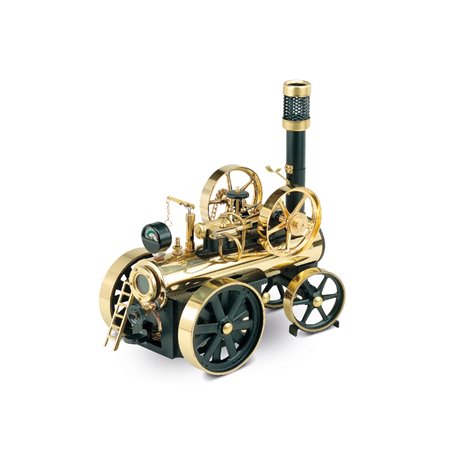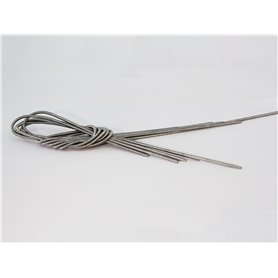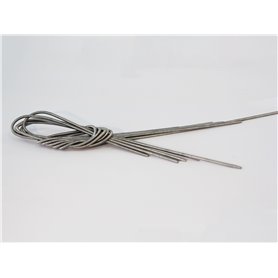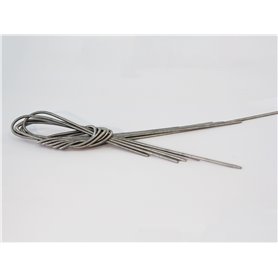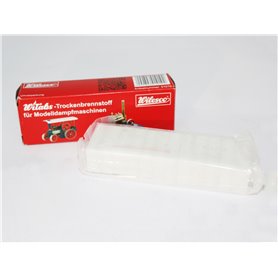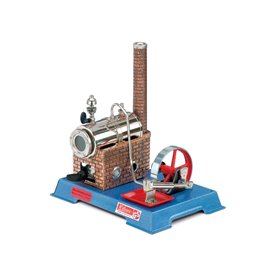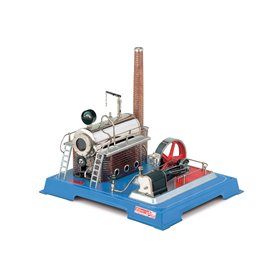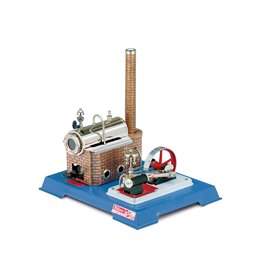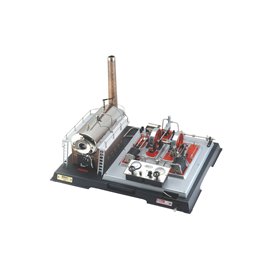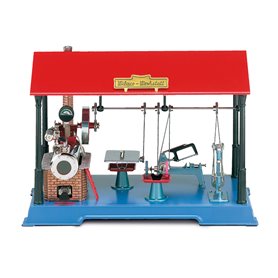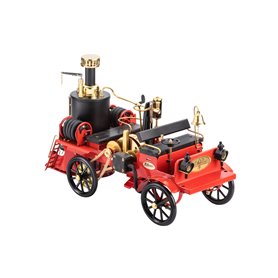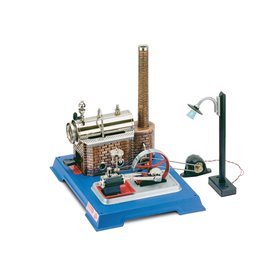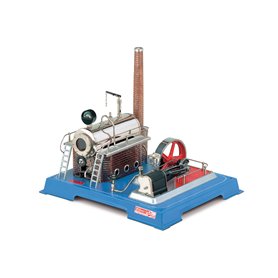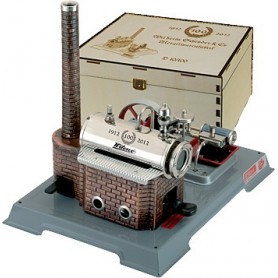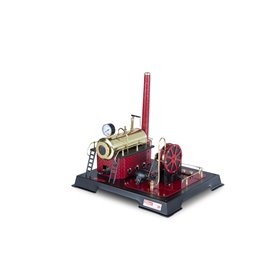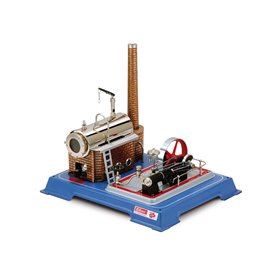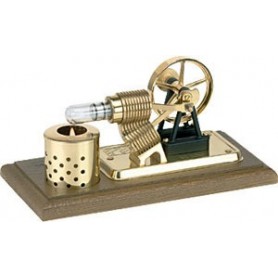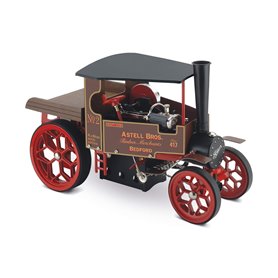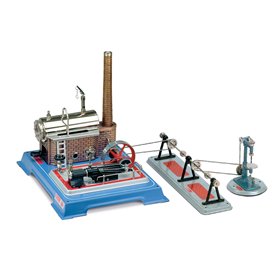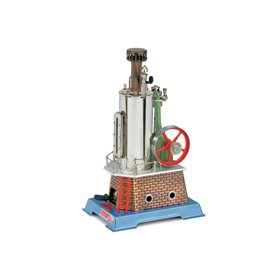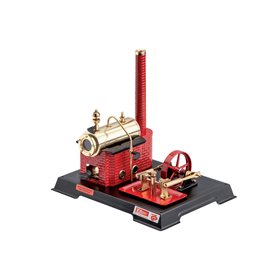Ånglokomobil D430
This article can only be ordered with payment method invoice or collect in our store.
-
 Secure payment in our shop!
Secure payment in our shop!
Ånglokomobil D430, svart/mässing.
The Steam-Powered Locomobile D430 by Wilesco
Locomotives were mainly used in agriculture around the turn of the 20th century. They were used for plowing and threshing. At that time, locomotives could be mounted both mobile and stationary. The difference to automobiles was that they were often pulled to their destination by horses. However, they could also drive themselves and move at a speed of 3 - 4 km/h. The details of the steam model D430 correspond to a common locomotive at that time. The brass boiler is 55 mm wide in diameter. It also has a compartmentalized smoke chamber for the condensate. This means that real steam comes out of the chimney, which can also be tilted in the middle by a hinge. The special thing is that the cylinder is double-acting and equipped with two flywheels and a double drive disc.
For the initial steam fun, the D430 comes with two pieces of our dry fuel Witabs to your home. For longer steam fun, make sure to order enough dry fuel!
The exciting history of the locomotive
Locomotives were primarily used by threshers. One could imagine these as a kind of agricultural day laborers. During harvest time, they traveled from farm to farm and offered their services there.
Their locomotives could be mounted both mobile and stationary at that time. The difference to automobiles was that they were often pulled to their destination by horses. However, they could also drive themselves and move at a speed of 3 - 4 km/h. However, operation and power development were only possible while stationary.
For heating the locomotives, low-grade fuel could be used for convenience. Thus, the firebox was even partially heated with straw or cheap wood. The steam engine built up a constant pressure and converted the heat into mechanical energy. The low noise level was particularly advantageous here. At the time, internal combustion engines caused high noise pollution, as the energy was generated as a sequence of explosions.
Locomotives were even used for heavy stationary work until the 1960s, mainly to drive stone crushers or log splitters. After that, they were largely replaced by tractors. These had a more efficient cost-benefit ratio and were easier to operate.
Did you know...
…that the TÜV (Technical Inspection Association) originated from the DÜV (Steam Boiler Inspection Association)?
As steam boilers became more capable of producing more power during industrialization, there were more and more accidents due to exploding boilers. A particularly severe case occurred in 1865 at the Mannheim Stock Brewery. To prevent this, regional "Steam Boiler Inspection Associations" were established, which later became the Technical Inspection Association (TÜV).
260mm x 150mm x 250mm

